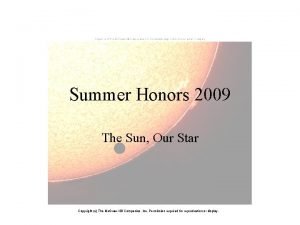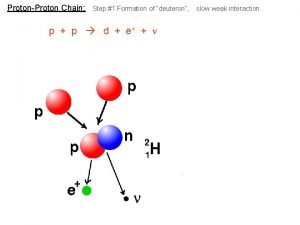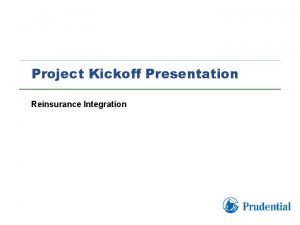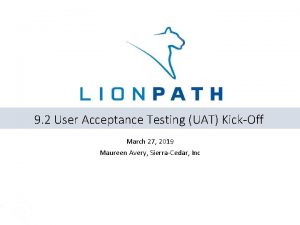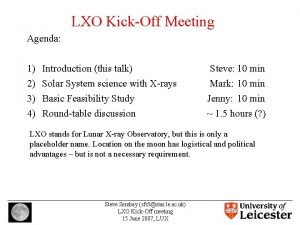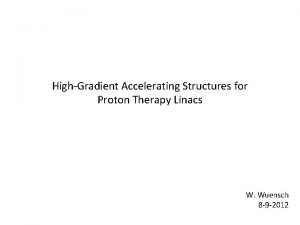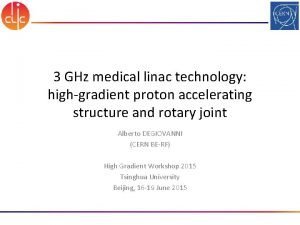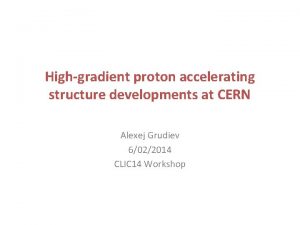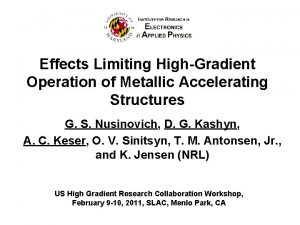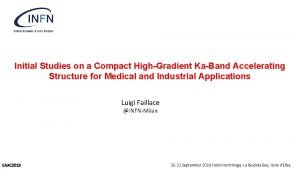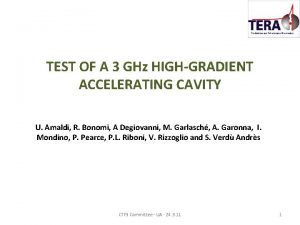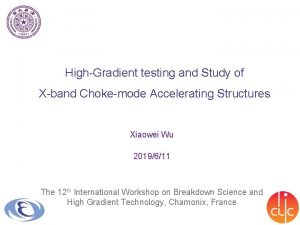Highgradient accelerating structures for proton acceleration Kickoff meeting









- Slides: 9

High-gradient accelerating structures for proton acceleration Kick-off meeting for our KT funded project CLIC perspective and introduction KT kick-off meeting, 30 May 2013 Walter Wuensch

CLIC accelerating structure development In the context of the study of a Te. V-range linear colliders – NLC/JLC and CLIC we have developed the science and technology for achieving high gradients, 100 MV/m, using short pulse, normal conducting rf. We are now actively seeking to expand the technological and industrial base for CLIC by promoting the use of high-gradient technology in other applications such as medical linacs, FELs, Compton sources etc. KT kick-off meeting, 30 May 2013 Walter Wuensch

CLIC project time-line

Accelerating gradients achieved in tests. Status: 4 -9 -2012 HOM damped KT kick-off meeting, 30 May 2013 Walter Wuensch

How we got there: High-power design laws The functions which, along with surface electric and magnetic field (pulsed surface heating), give the high-gradient performance of the structures are: Es/Ea global power flow local complex power flow New local field quantity describing the high gradient limit of accelerating structures. A. Grudiev, S. Calatroni, W. Wuensch (CERN). 2009. 9 pp. Published in Phys. Rev. ST Accel. Beams 12 (2009) 102001 KT kick-off meeting, 30 May 2013 Hs/Ea Sc/Ea 2 Walter Wuensch

How we got there: heat treatment and material structure TD 18#3 at SLAC TD 18#2 at KEK Stacking disks Temperature treatment for high-gradient developed by NLC/JLC KT kick-off meeting, 30 May 2013 Attempting to understand why it works. Walter Wuensch

Micron precision turning and milling • Accelerating structure tolerances drive transverse wakefields and off-axis rf induced kicks which in turn leads to emittance growth – micron tolerances required. • Multi-bunch trains require higher-order-mode wakefield suppression – cells require milled features. • High-speed diamond machining also seems to be beneficial for high-gradient performance through minimizing induced surface stresses. Development done “in industry” KT kick-off meeting, 30 May 2013 Walter Wuensch

Evolution of machining capability Single point diamond turning Up to the 1980’s - 1990’s 2000’s - 2010’s First machines at research institutes and universities Start of industrialization • Optical recording • contact lenses • Larger machines • Multiple axis ( X/Y/Z and C) Future ? • Intelligent machines ? • Robotisation ? Ultra precision diamond milling (lagging more than a decade behind on turning) Up to the 1990’s Limited to fly cutting • mirror optics • Laser scanner mirrors 30 October 2012 1990’s - 2000’s Milling as add-on on lathes • Lens arrays • Intra ocular lenses 2010’s First proto type machines • Micro fluidics • Accelerator parts IEEE NSS and MIC Future ? • Pallet machining? • Robotisation ? Walter Wuensch

This project The objective of this project is to design and build two accelerating structures for a compact proton accelerator as one might incorporate in TULIP, using the high-gradient technology developed for CLIC. The proton energies we will design for are 76 and 213 Me. V. The primary challenge comes from the low velocity of the protons, which leads to a very different design rf structure compared to that for relativistic electrons. We hope to be able to raise the accelerating gradient from the 27 MV/m of LIBO linac tanks up to the range of 50 MV/m. Our sincere thanks to the KT department to making this project possible. KT kick-off meeting, 30 May 2013 Walter Wuensch
